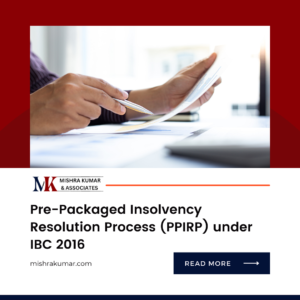The Process of Admission of a Company into NSDL and CDSL
The National Securities Depository Limited (NSDL) and the Central Depository Services Limited (CDSL) are two major depositories in India that facilitate electronic trading and settlement of securities. Admission of a company into these depositories is a significant step for any publicly listed entity. In this blog, we will explore the process and importance of admitting a company into NSDL and CDSL.
INTRODUCTION
The National Securities Depository Limited (NSDL) and the Central Depository Services Limited (CDSL) are two major depositories in India that facilitate electronic trading and settlement of securities. Admission of a company into these depositories is a significant step for any publicly listed entity. In this blog, we will explore the process and importance of admitting a company into NSDL and CDSL.
ANALYSIS
Understanding NSDL and CDSL Admission
Before we delve into the details, let’s clarify what NSDL and CDSL admission entails:
NSDL and CDSL: NSDL and CDSL are depositories that hold and maintain securities in electronic form. They eliminate the need for physical share certificates, making the trading and settlement of securities more efficient and secure.
Admission Process: Admission of a company into NSDL and CDSL involves establishing an electronic link between the company and the depository. This enables electronic dematerialization of the company’s shares, making them available for trading in demat form.
Importance of Admission
Why is the admission of a company into NSDL and CDSL important?
Enhanced Liquidity: Being a part of NSDL and CDSL increases the liquidity of a company’s shares as they can be easily traded in electronic form.
Efficient Share Transfer: Admission simplifies the process of transferring shares, making it faster and more cost-effective.
Investor Convenience: Electronic holding of shares provides convenience to investors, eliminating the risk of loss or damage to physical share certificates.
Market Access: Admission allows a company’s shares to be traded on various stock exchanges, broadening its market reach.
Part 3: The Admission Process
The admission process typically involves the following steps:
Selection of a Depository Participant (DP): The company must select a DP, which acts as an intermediary between the company and the depository.
Dematerialization of Shares: The physical share certificates of the company are dematerialized into electronic form through the DP.
Submission of Application: The company submits an application for admission to NSDL and CDSL through its DP, providing necessary documents and details.
Technical Integration: The company and its DP undergo a technical integration process with NSDL and CDSL to establish electronic connectivity.
Testing and Approval: A series of tests are conducted to ensure seamless electronic transactions. Once approved, the company is admitted into NSDL and CDSL.
CONCLUSION
Admission of a company into NSDL and CDSL is a critical step for any publicly listed entity in India. It streamlines the trading and settlement process, enhances liquidity, and provides convenience to investors. Additionally, it aligns the company with industry best practices and regulatory requirements.
As the Indian securities market continues to evolve, the admission into these depositories remains a fundamental requirement for companies seeking to provide efficient and secure means for their investors to trade and hold shares.
FAQs
Q1: Can privately held companies also apply for admission into NSDL and CDSL?
A1: Generally, NSDL and CDSL admission is sought by publicly listed companies. However, privately held companies can also explore the possibility, but the process may differ.
Q2: Is admission into NSDL and CDSL mandatory for listed companies in India?
A2: Yes, admission into NSDL and CDSL is typically mandatory for publicly listed companies in India as per regulatory requirements.
Q3: What are the costs associated with the admission process?
A3: The costs associated with the admission process can vary and may include fees for dematerialization, technical integration, and ongoing maintenance. Companies should consult with their chosen Depository Participant for specific cost details.
Q4: How long does the admission process typically take?
A4: The duration of the admission process can vary depending on factors such as the readiness of the company and the efficiency of the chosen Depository Participant. It may take several weeks to complete all necessary steps.
RECENT POSTS
- The implication of Stamp Duty on Scheme of Arrangement (Merger & Amalgamation):
- Pre-Packaged Insolvency Resolution Process (PPIRP) under IBC 2016
- BUY BACK OF SHARES V/S DIVIDEND
- Comprehensive comparative analysis of SEBI (Listing Obligations and Disclosure Requirements) (Second Amendment) Regulations, 2021.
- SEBI (Delisting of Equity Shares) Regulations, 2021-Imposes new responsibilities on the board of directors.

The implication of Stamp Duty on Scheme of Arrangement (Merger & Amalgamation):
The implication of Stamp Duty on Scheme of Arrangement (Merger & Amalgamation): The Scheme of Arrangement is a legal mechanism under corporate law that allows

Pre-Packaged Insolvency Resolution Process (PPIRP) under IBC 2016
Pre-Packaged Insolvency Resolution Process (PPIRP) under IBC 2016 The Insolvency and Bankruptcy Code (IBC) 2016, is a comprehensive legislation aimed at consolidating and amending laws

BUY BACK OF SHARES V/S DIVIDEND
BUY-BACK OF SHARES V/S DIVIDEND A dividend offers cash rewards to all shareholders in accordance with their stake in the company, whereas a share buyback

Comprehensive comparative analysis of SEBI (Listing Obligations and Disclosure Requirements) (Second Amendment) Regulations, 2021.
Comprehensive comparative analysis of SEBI (Listing Obligations and Disclosure Requirements) (Second Amendment) Regulations, 2021. Securities and Exchange Board of India (“SEBI”) vide notification dated May

SEBI (Delisting of Equity Shares) Regulations, 2021-Imposes new responsibilities on the board of directors.
SEBI (Delisting of Equity Shares) Regulations, 2021-Imposes new responsibilities on the board of directors. Securities and Exchange Board of India (“SEBI”) vide notification dated 10th

Summary of Insolvency and Bankruptcy Board of India (Liquidation Process) (Amendment) Regulations, 2024
Summary of Insolvency and Bankruptcy Board of India (Liquidation Process) (Amendment) Regulations, 2024 The Insolvency and Bankruptcy Board of India (IBBI) recently issued amendments to

